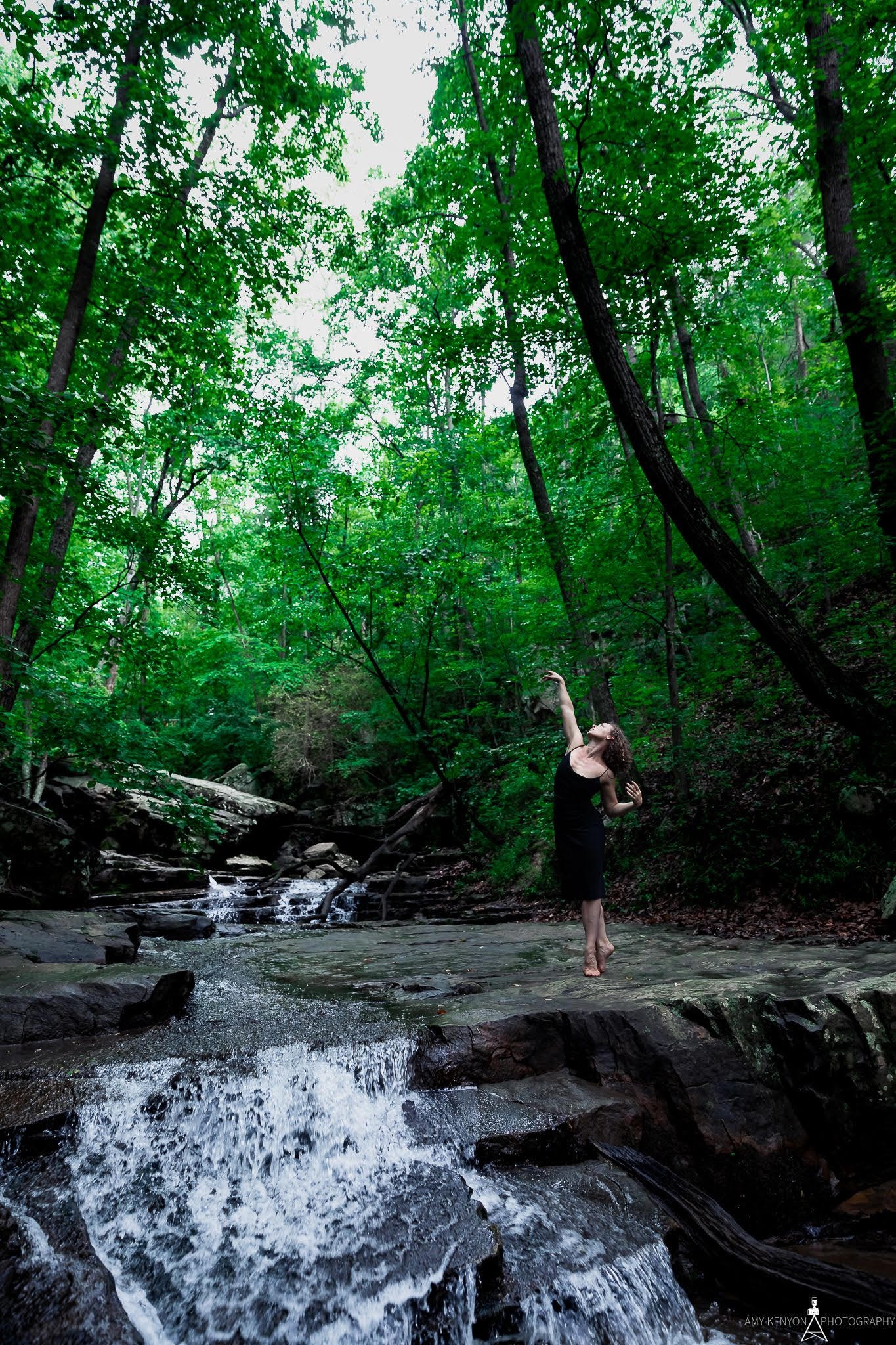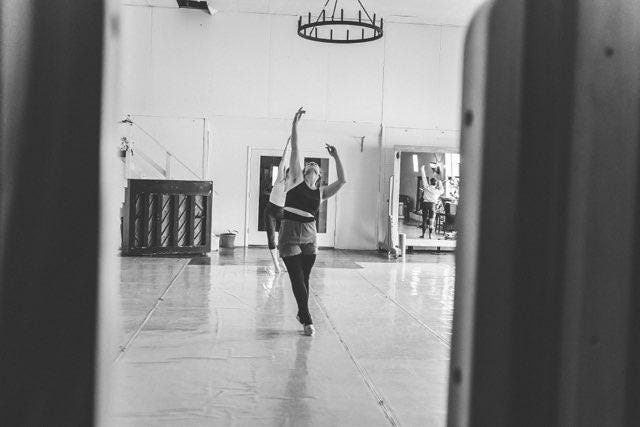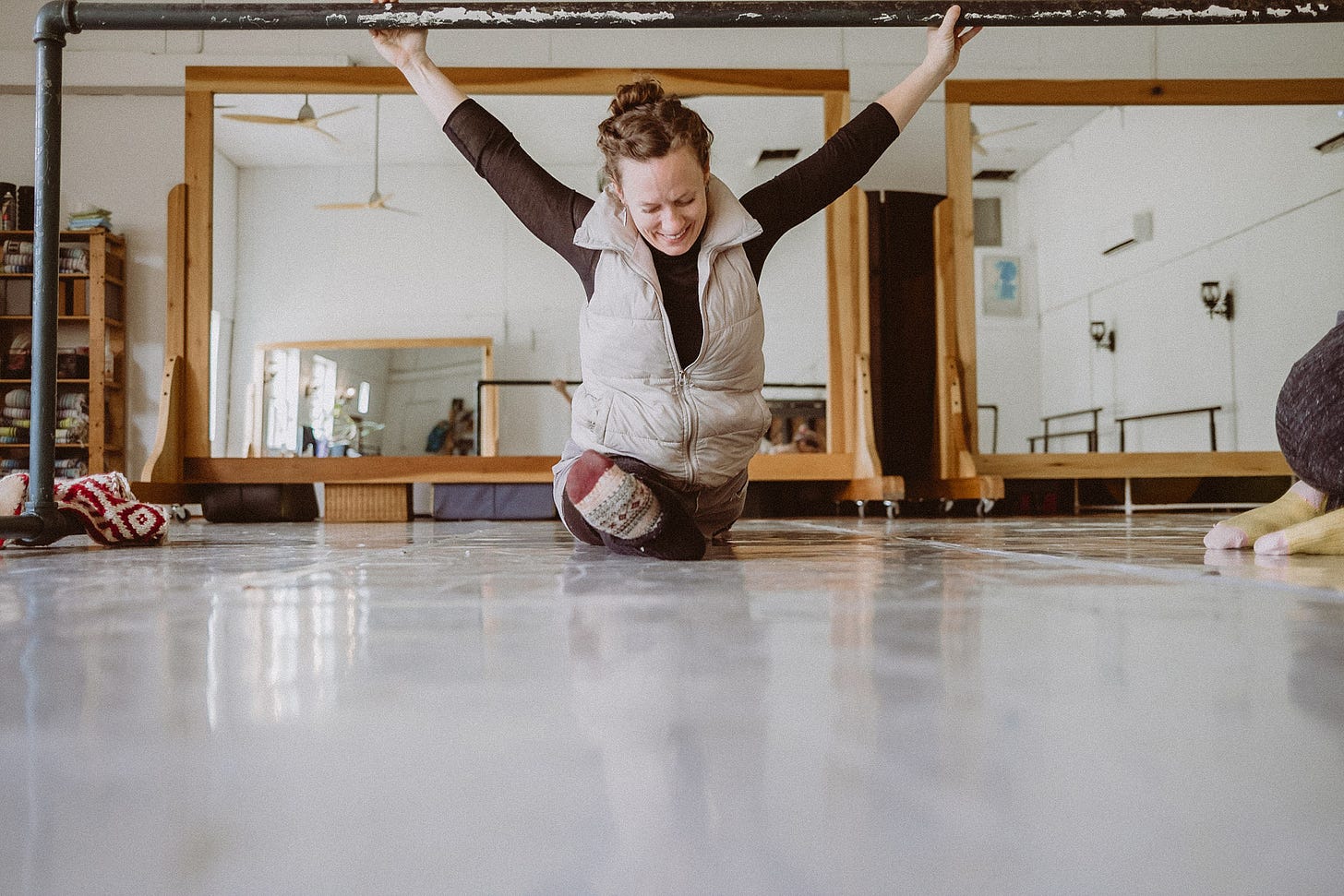If God Was a Choreographer
Sarah Yvonne, director of Ballet Esprit, reflects on her creative process and vision for the future.
Welcome!
This is the second issue of DanceChatt, a publication dedicated to dance writing centered in Chattanooga, Tennessee. Here you'll find criticism, essays, interviews, poems, stories, and reviews. This week, we delve into the creative imagination of Sarah Yvonne, director of Ballet Esprit.
If you know a creator of dances in town, reach out. We sometimes don’t appreciate the richness of spirit and depth of art all around us or take time for the wide-ranging coffee talks that refresh our souls. DanceChatt is perfect place for long-form conversations with artistic directors, choreographers, costumers, set designers, improvisors, and all the other creative spirits who help give birth to dances.
Our first issue contained a reflection by Jessi Faircloth on a powerful collaboration in which dancers tell each others’ stories through movement. If you missed it, take a look!
If God Was a Choreographer
Photos by Amy Kenyon and Amanda Martin
Fresh off a collaboration with Carolyn Dorfman Dance, Sarah Yvonne spoke with leaves rustling behind her and a steaming mug in her hand.
DanceChatt: Let’s start with your most recent project. Ballet Esprit participated in a collaboration between several Chattanooga dance companies and Carolyn Dorfman Dance. How did working with Carolyn Dorfman and her dancers affect you as a director and choreographer? What was that collaboration like? What did you learn?
Carolyn’s vision, which is quite similar to mine, is that individuals are so unique in themselves and in their own creativity that when we come together as a community we can create synergy. And that process is what it was about — the coming together. The culmination of the process was magnificent, of course. But just being affirmed by her was probably the most important thing, because when you feel affirmed by someone who has such a magnificent presence on the planet it feels like a validation. It gave me a moment to trust myself.
As an artist, I struggle to trust that what I’m doing is good. “Is this my dharma?” I ask. I feel like the struggle for me, as it is for many other artists, is the need to express something and to share it with the community. I feel this imperative to share my light with others, but then I desperately want to hide as well. I just want to hide! It’s like my light is too much to handle, much less be vulnerable enough to share it with others.
My dream is so big I feel sometimes like I have to constantly apologize for where I am right now. That tendency is something I have to overcome. I feel so small in comparison to my vision. I feel like I’m doing microcosmic versions of a macrocosmic idea right now. I feel like I’m the Little Prince on this tiny planet with this really big idea.
Back to that process with Carolyn, knowing someone of her gravity affirms what I’m doing gave me a platform to step up and into my purpose.
DanceChatt: Tell us how you got your start as a choreographer.
I have been choreographing my own pieces since I was about 8 and have been performing my own choreography since I was 11. The first time I performed, someone said to me that I had brought them to tears. That’s the first time I recognized I have something powerful in me that moves other people.
This comes back to Carolyn. She said, “We all are energy.” Not we have energy, we are energy. When that person was moved to tears by my dancing, I recognized that my energy moves others. It changes others. I wanted to use that energy for good. I realized if I provoked emotion I’d done the work I’ve been put here to do. So since I was young I’ve known that my objective on this planet has been to move others, to change them and heal them and help them grow … not to force it but to touch people so they have their freedom to change as they want to change.
DanceChatt: As you’ve expanded from choreographer to company director, what have you learned?
Part of the thing as an artist that holds me back is the human challenge of channeling my thoughts and passions. So watching Carolyn’s assistants and her process with them was important for me as a director. She relies on her associate executive director, Jacqueline Dumas Albert, to assist with rehearsals. Here at Ballet Esprit, Grace Ragland, my intern, has stepped in as rehearsal director at times. In the past, Ballet Esprit Adult Collective member Melissa Miller has been our assistant rehearsal director and choreographer, as well as my dancing soulmate.
DanceChatt: Many of Ballet Esprit’s performances are immersive, outdoor experiences. For example, an audience member who saw a 20-minute work called Chambers at the lakeside felt that water spirits were summoned to join the dancers. Tell me about the role of nature in your work.
I feel safer at our studio deep in the heart of Lookout Valley than I’ve ever felt. When you offer people a more natural environment, it becomes a space with everything they need to do exactly what they need to do. The creative process is so very vulnerable, but once you feel at ease in nature you’re able to get honest and true with that creative work.
We also do things from scratch. For instance, I create costumes. We love to offer a timeless world for people, and our costumes tend to be abstract and ethereal. That’s why I like to use natural fibers and calming colors so everyone can relax and soften and get more wrapped up in the experience — the dancers and the audience both.
DanceChatt: For you, being a company director/artistic director is an expansion of the creative role. How would you describe your process as a maker of dances?
When I’m creating a work, I start with the intention behind it. It’s usually a concept. Then I find out how much time I have to create the concept. And then I find out everything about the space where we’ll be performing. How big is it? How many people will watch? That can inform the kind of movements I create, petite movements or large movements.
There’s a lot of framework that has to be in place, but once the framework is in place I can lose myself, whether it’s in the music or the feelings … but the structure, the boundaries have to be there. As soon as I know my boundaries then I can go wild.
When you create ballet you are creating a symphony. You are a composer of the symphony, and then you conduct it. You are an architect. You have to see where your choreographic idea fits in with the big picture.
DanceChatt: How does this big-picture, mythopoetic approach inform your pedagogy?
For dance families, that means committing for an entire year so their child can experience the process of the four seasons and how we build an entire experience for them that they’ll never forget. The theme shapeshifts yearly, but I always want you as a dancer to grasp the bigger picture while understanding how very special and wonderful you are as an individual. I want you to know the collaborative experience of building something together as a community.
This year, since we’re working with an exhibit at the Hunter Museum, I’ll take our students to see the exhibit. They’ll journal about it and do some movement around it. Some students will have the opportunity to dance in a program at the museum this summer. Then we’ll build the choreography across the year, adding pieces at our intensives and giving the students shorter selections they can take into the community. Then it will culminate in a full-length ballet with the Ballet Esprit Adult Collective a year from now.
DanceChatt: You started dancing in a religious context. How does religion or spirituality inform your art now?
(Laughing) “If God was a choreographer … ” Our society’s got it all wrong that God was a man. The woman’s body was the creator. So why is God the Creator portrayed as male? We have to tap into masculine energy and feminine energy. We have to tap into divinity. If you want to create something that’s really true, if you want to get down to the task of creativity and producing life, you have to ask, “Where is my source coming from? What well am I drawing from?”
DanceChatt: Tell us about an upcoming project where we can see your vision unfolding.
On Aug. 10, we’ll be dancing a program to accompany In Nature’s Studio, an exhibit of American landscape art at the Hunter Museum. Melissa Miller is the primary choreographer— she and I develop programs together. This program is part of a larger work we’ll be building all year called The Elemental Project. It centers around the elements of earth, air, water, fire and space.
We’re collaborating with textile and sensory artist Kris Bespalec of the Hunter Museum. Kris will create pigments from local soils to use on the silk fabrics I like to incorporate into dances. We’ll be working not only with movement but with color and earth to make our costumes and create the experience for the audience. We’ll have to see how messy the Hunter Museum will let us get!
Learn more about Sarah Yvonne and Ballet Esprit
instagram.com/ballet.esprit_collective
About the Author
Jenn McCormick is a writer, editor and dancer working in Chattanooga. She is the publisher and managing editor of DanceChatt. You can find her fiction and other essays at Elf’s Writing.
Join the Chatt
I hope you enjoyed this Q&A. Next week, we’ll hear about Les Sylphides & The Princess In The Tower by Massari-Wood Dance Center, taking place this weekend. Who’s going? This girl, that’s who. Hope to see you there.
Join the conversation! If you’re interested in writing for DanceChatt, send a pitch email to jennelisewebster@gmail.com.
Until then, keep dancing.
— Jenn McCormick







